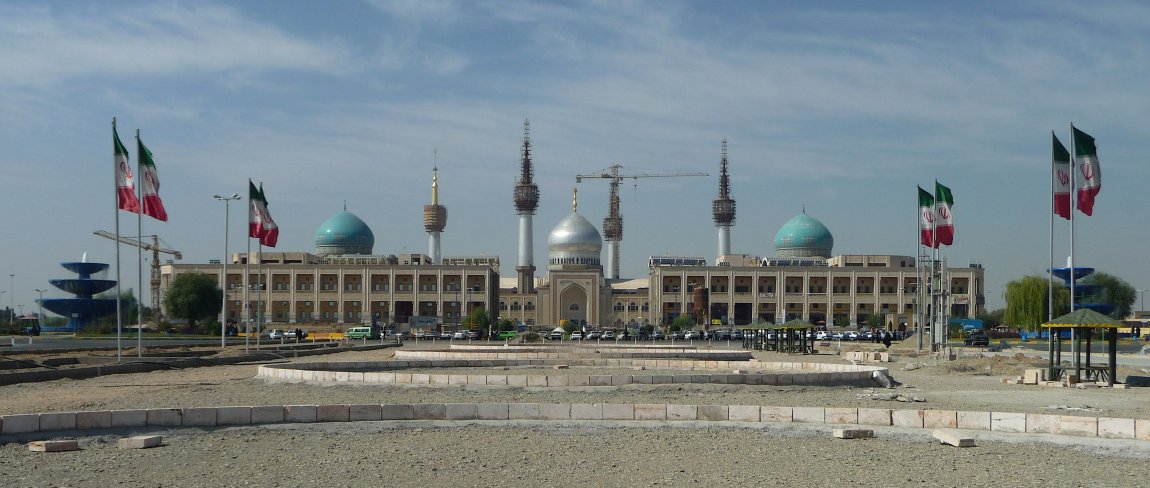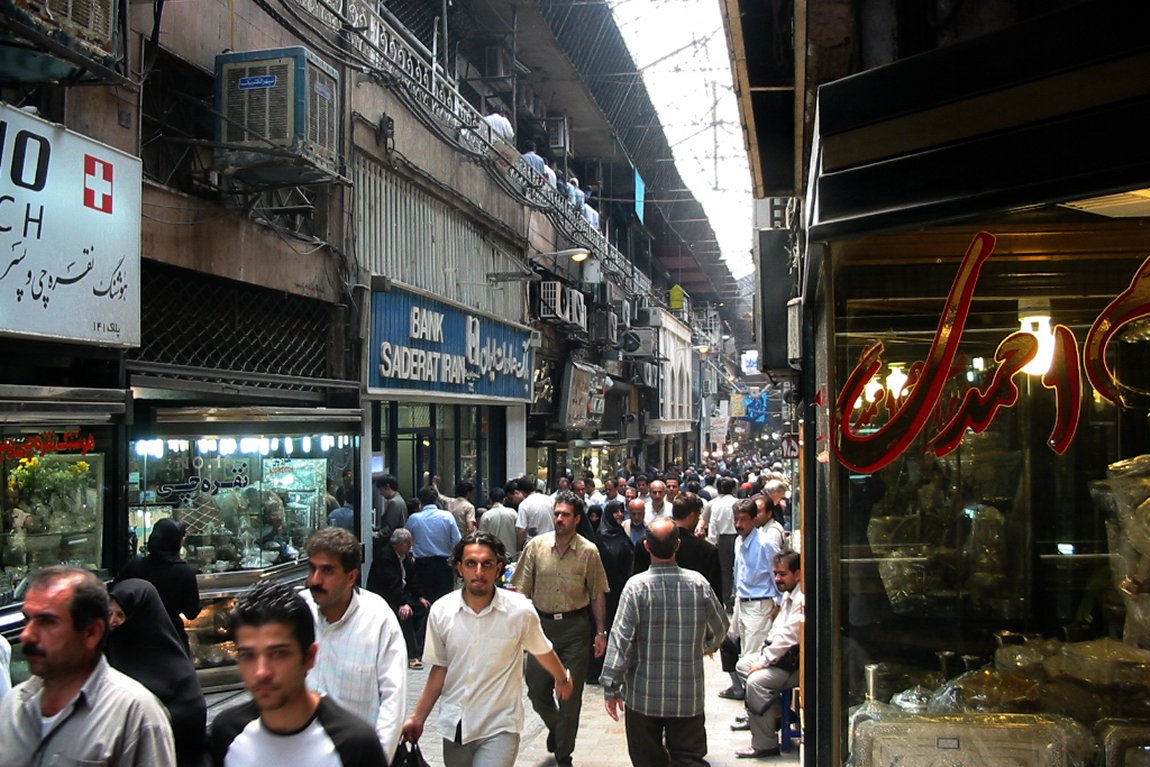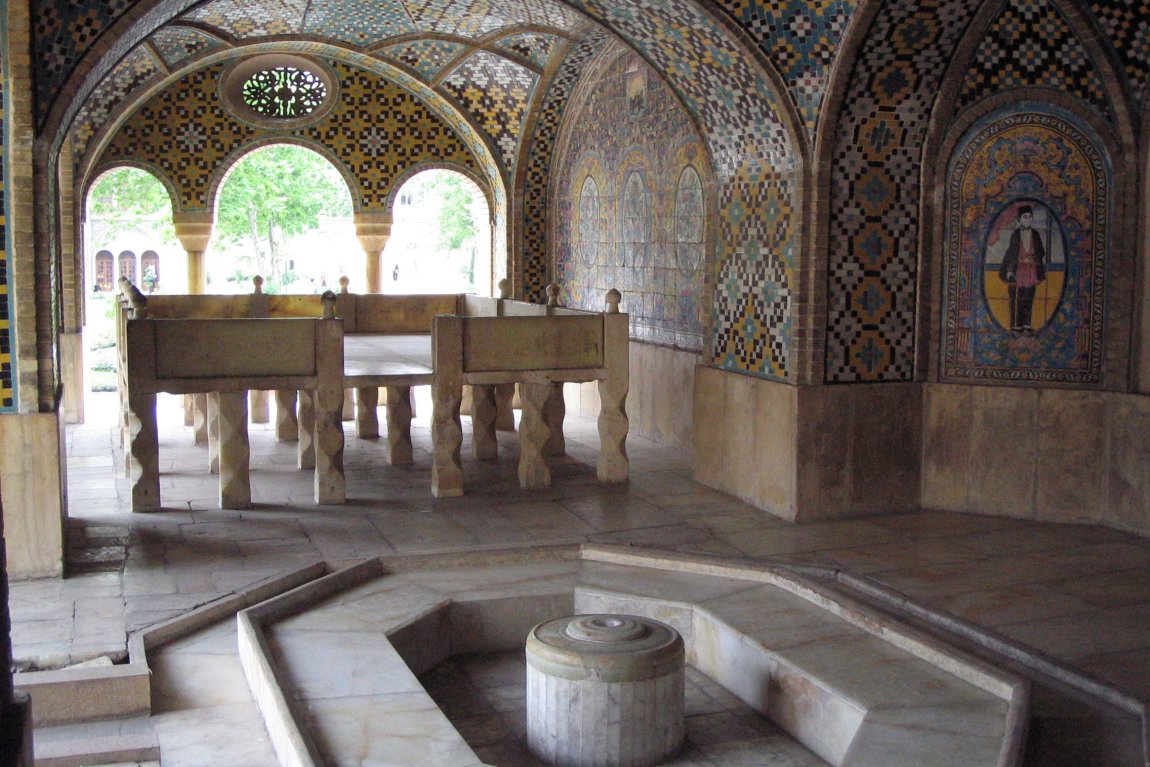Tehran (Persian: تهران) is the capital and largest city in Iran. It coers 730 sq km (280 sq mi), within a metropolitan area of 1,274 sq km (492 sq mi). Tehran has a population of 8.5 million people, and a metropolitan population exceeding 13.5 million people. It is one of the largest cities in Southern Asia and Western Asia.
Tehran is located 1,200 m (3,900 ft) above sea level. Its history goes back to antiquity, with one of the earliest mention of it in AD 641m when Yazdegerd III issued an appeal to the nation to flee to Khorasan. It is not known how Tehran got its name. By the 9th century, it was the site of a village, though at that time overshadowed by the city of Rhages. It benefited when Rhages was destroyed by Mongols in the 13th century, forcing its inhabitants to flee to Tehran.
Tehran's modern history began in the early 18th century, when Karim Khan Zand ordered the contruction of a palace and government office buildings there. Instead of moving his capital there, however, he moved it to Shiraz.
Tehran only became the capital in 1795 under the Qajar ruler Agha Mohammad Khan. Nonetheless, most of the historic buildings in Tehran today dates from the series of constructions implemented by the Shah of Iran, Reza Shah Pahlavi in the 1920s and 30s. It further developed under the rule of Shah Mohammad Reza Pahlavi. Following the 1979 Islamic Revolution, Tehran further urbanized with a number of new government projects including Milad Tower.

Khomeini Mausoleum, Tehran, Iran
Source: http://commons.wikimedia.org/wiki/File:Chomejn%C3%ADho_mauzoleum.jpg
Author: Ondrej Zvacek

Author: Ondrej Zvacek


Grand Bazaar, Tehran, Iran
Source: http://commons.wikimedia.org/wiki/File:Iran_012.jpg
Author: Hansueli Krapf

Author: Hansueli Krapf


Karim Khan retreat within the Golestan Palace compound in Tehran
Source: http://commons.wikimedia.org/wiki/File:Khalvat-e-Karim_Khani.jpg
Author: Fabienkhan

Author: Fabienkhan

Visiting Tehran
The new Imam Khomeini International Airport (IKA) is the main gateway to Tehran. The city receives flights from major cities in Europe, Africa and Asia. The national carrier Iran Air flies to Amsterdam, Istanbul, London, Tokyo and Vienna, among others. There are also many flights from Dubai.Places of Interest in Tehran
- Azadi Tower
- Crown Jewels of Iran
- Darabad Museum of Natural History
- Ebrat Museum
- Glassware Museum of Tehran
- Golestan Palace
- Grand Bazaar
- Jamshidieh Park
- Kolahstudio-an Art Basement
- Mausoleum of Ayatollah Khomeini
- Milad Tower
- Money Museum
- National Arts Museum
- National Museum of Iran
- National Rug Gallery
- Niavaran Palace
- Reza Abbasi Museum
- Saadabad Palace
- Sa'd Abad Gallery of Fine Arts
- Safir Office Machines Museum
- Talar Vahdat Theater
- Tehran Museum of Contemporary Art
- Time Museum
- Treasury of the National Jewels
 Latest updates on Penang Travel Tips
Latest updates on Penang Travel Tips
 Map of Roads in Penang
Map of Roads in Penang
Looking for information on Penang? Use this Map of Roads in Penang to zoom in on information about Penang, brought to you road by road.
Copyright © 2003-2025 Timothy Tye. All Rights Reserved.

 Go Back
Go Back